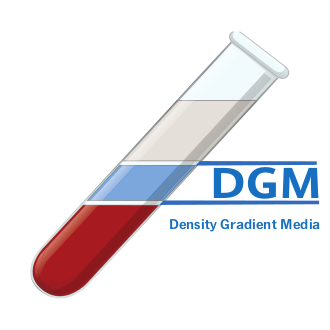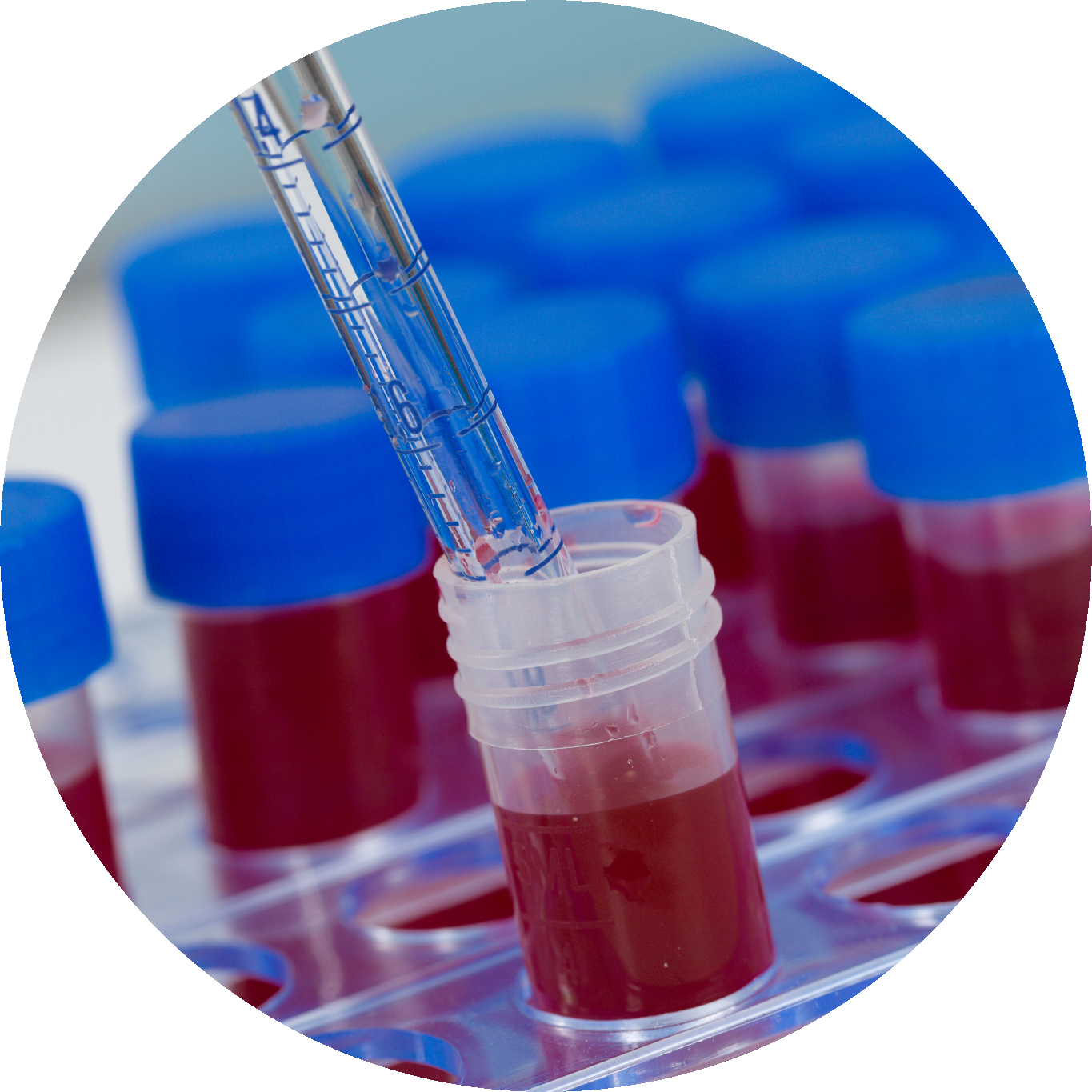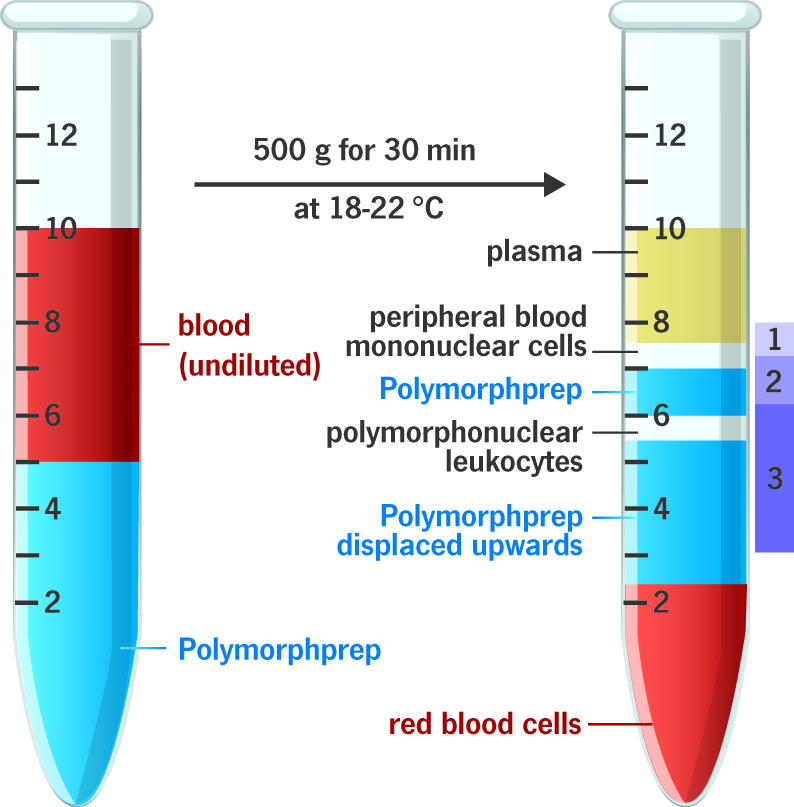
Density Gradient Media
Excellence in Separations
- Lymphoprep
- Lymphoprep Tube
- OptiPrep
- Polymorphprep
- Nycodenz
- Polysucrose 400
Polymorphprep
Isolation of human polymorphonuclear cells
A number of procedures have been developed in an effort to overcome these difficulties.
The high osmolality of Polymorphprep causes erythrocytes to lose water and shrink, thus increasing their effective buoyant densities. This allows the dextran aggregated erythrocytes to sediment rapidly through the dense medium.
Because the osmotic gradient between the medium and the erythrocytes declines as the cells sediment further into the medium (ie the water loss from the erythrocytes is greatest at the top of the Polymorphprep and progressively decreases as they sediment further) – a gradient of diatrizoate forms within the density barrier. The PMNs band is within this density gradient while the mononuclear cells remain at the sample/medium interface.
Each batch of Polymorphprep is checked on the level of endotoxins using a specific LAL test. Our goal is to produce batches with an endotoxin level lower or equal to 0.13 IU/ml.

The temperature is important to obtain optimal results, as changes in temperature effect the density and viscosity of the Polymorphprep solution. The temperature of the blood sample and the medium should be kept between 18 – 22 °C.



The cell band on top of the Polymorphprep contains only peripheral blood mononuclear cells (PBMCs). The cell band itself can be separated into lymphocytes (upper layer, 1) and monocytes (lower layer, 2).
All of the PMNs are in the bottom cell band, which is enclosed of the Polymorphprep solution. Contamination of the PMN band by erythrocytes is between 2 – 6 % of the total cell number

tested solution with the following specifications:
| Sodium diatrizoate | 13.8 % (w/v) |
| Polysucrose | 8.0 % (w/v) |
| Density | 1.113 ± 0.001 g/ml |
| Osmolality | 445 ± 15 mOsm |
| Endotoxins | < 1.0 IU/ml |
a sterile solution in the following package sizes:
| Prod. No. 1895 | 1 x 250 ml |

